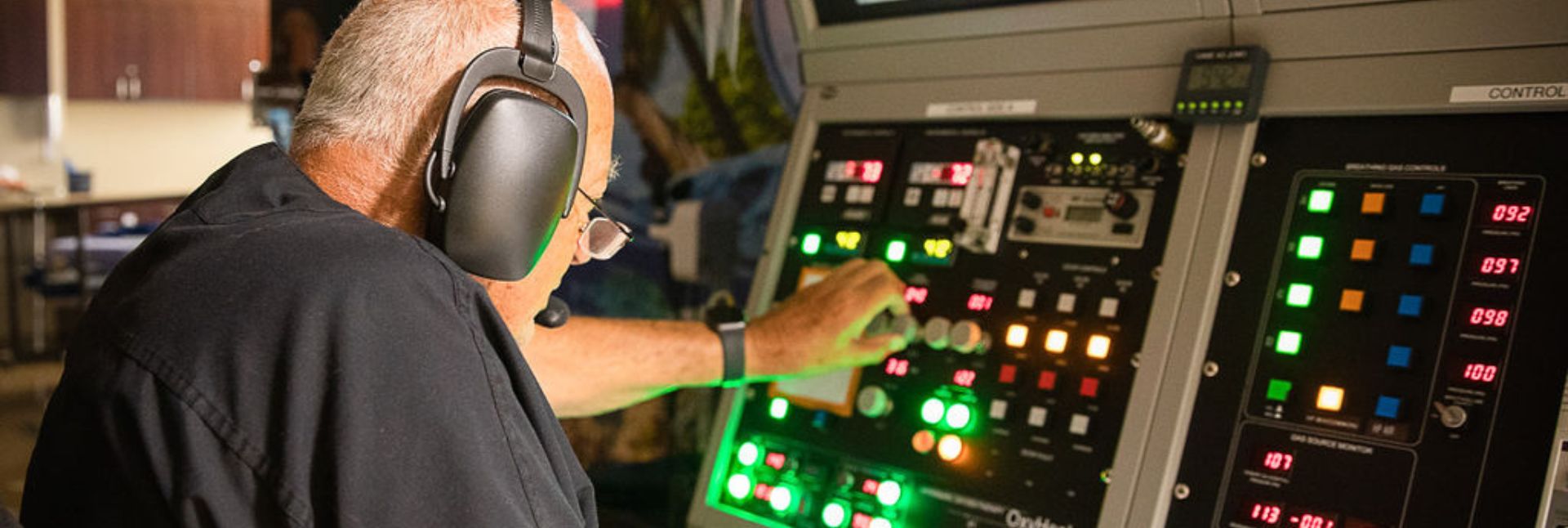Wound Healing After Radiation Therapy—Is HBOT Part of Your Treatment Plan?

Wound Healing After Radiation Therapy—Is HBOT Part of Your Treatment Plan?
According to the American Cancer Society, there will be an estimated 1.9 million new cancer cases diagnosed in the United States in 2022.
Radiation therapy will be utilized as an effective treatment in over half of those cancer patients. The American Cancer Society estimates that over 95% will develop some type of skin injury from the therapy.
When injuries from radiotherapy result in chronic wounds, HBOT can be an extremely effective treatment.
In this post, we’ll discuss the most common types of chronic wounds caused by radiation therapy and the role of hyperbaric oxygen therapy as part of a comprehensive treatment plan.
We turned to the National Institutes of Health for some clarification on the effects of radiation therapy on skin tissue:
In the course of radiotherapy, over 70% patients experience radiodermatitis, ranging from faint erythema, dry desquamation, moist desquamation, and necrosis. After radiotherapy, patients with radiodermatitis may experience skin fibrosis, which is demonstrated as a change of skin texture, retraction, discomfort, telangiectasia, pain, and itching.
Blood vessels damaged by radiation therapy can result in avascular, aseptic necrosis. This can lead to soft tissue necrosis, osteomyelitis, bone fractures, chronic non-healing wounds, and severe infection. When PAD is also present, reduced blood flow in the lower extremities can cause chronic foot wounds.
After radiation therapy, reduced blood flow and oxygenation can lead to the three H’s of radiation-induced wounds—hypoxia, hypovascularity, and hypocellularity.
These conditions can ultimately lead to unnecessary, preventable amputations and refractory wounds if not treated promptly. But there is hope, and there are effective, CMS-approved treatments available. That’s where the dedicated team at CūtisCare and our network of partners can help.
HBOT can be an extremely effective, non-invasive, CMS-approved treatment for wounds resulting from radiation therapy.
Hyperbaric oxygen therapy can be used as part of a comprehensive treatment plan for a wide variety of radiation therapy-induced injuries. These injuries include:
- Soft Tissue Radionecrosis (STRN)
- Compromised Skin Grafts and Flaps
- Radiation Tissue Injury After Mastectomy
- Chronic Radiation Tissue Injury (CRTI)
- Osteoradionecrosis (ORN)
- Radiation Cystitis
- Proctitis Bowel Injury/Bleeding After Radiation
Quite often, hyperbaric oxygen therapy is the only treatment option for patients who want to prevent permanent bone or tissue loss or who need to undergo life-changing reconstructive procedures like breast or facial surgery. By providing this treatment, we can improve the quality of life for people who have overcome serious health challenges.
HBO2 treatments can promote healing and reduce hypoxia, hypovascularity, and hypocellularity, along with the pathophysiological processes associated with radiation therapy's early and late effects.
Some of the potential healing effects of HBOT treatments include:
- Reducing edema by flooding damaged cells with hyperbaric oxygen
- Formation of new blood vessels, connective tissue, and skin cells
- Preventing reperfusion injury (tissue damage) by encouraging natural oxygen radical scavengers to seek out problem areas
- Fighting infection by blocking harmful bacteria and strengthening the immune system
Early diagnosis and treatment of the adverse effects of radiation therapy with HBOT can result in extremely positive patient outcomes.
The team of doctors, clinicians, and allied healthcare professionals at CūtisCare are committed to helping our partners deliver safe, non-invasive, medicare-approved treatments for non-healing wounds. We provide hospitals, research facilities, clinics, and private practices nationwide with the solutions, physician mentoring, and knowledge they need to treat patients with chronic and refractory wounds.
Are you in the planning phase of establishing a comprehensive wound care center or perhaps re-evaluating your current wound management practice or program?
Or do you just have some questions about wound care and Hyperbaric Medicine? Wherever you’re at in your wound care journey, we’d love to share our 25 years of knowledge and experience with you. Get in touch with one of our HBOT thought leaders today.
